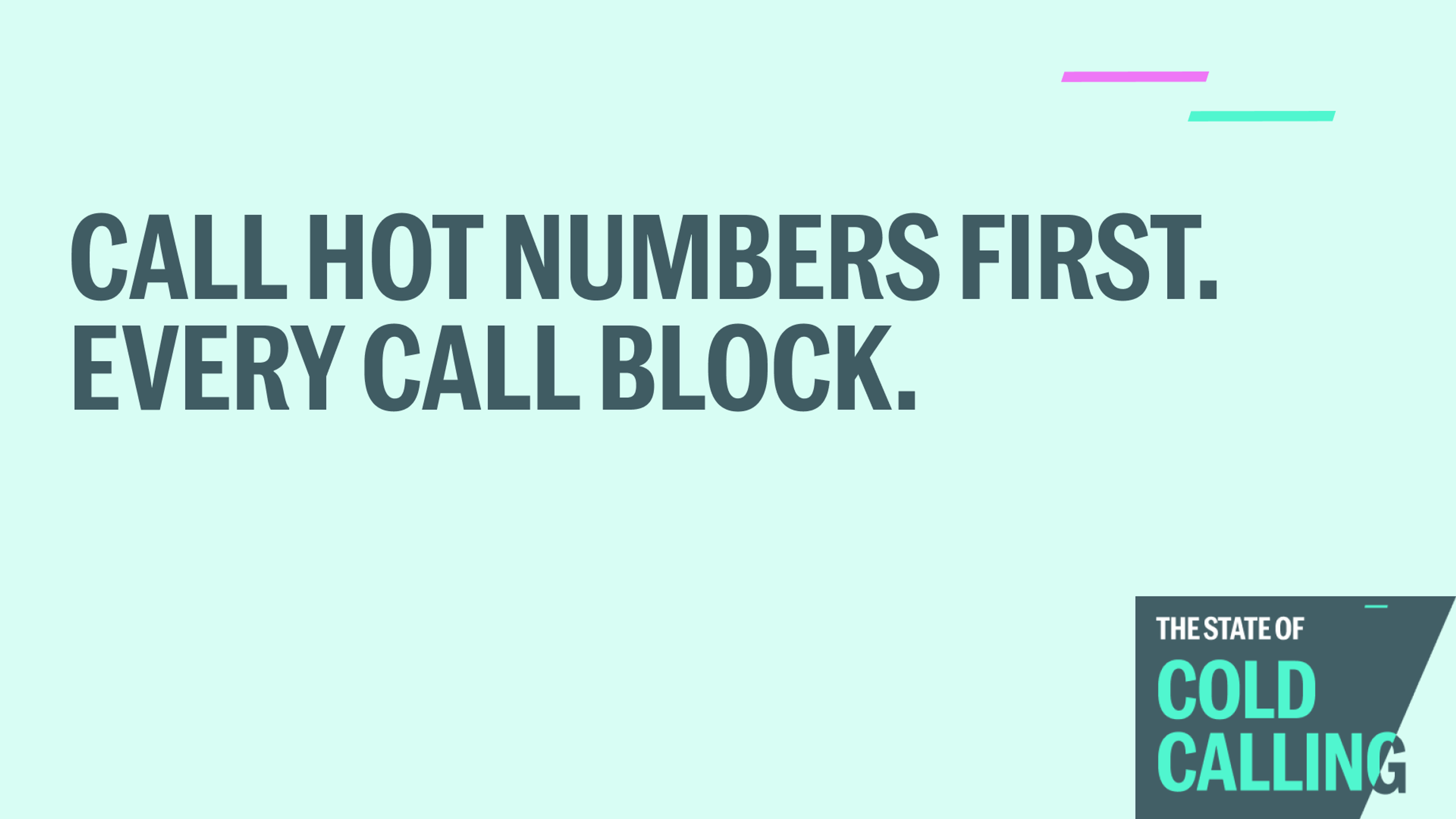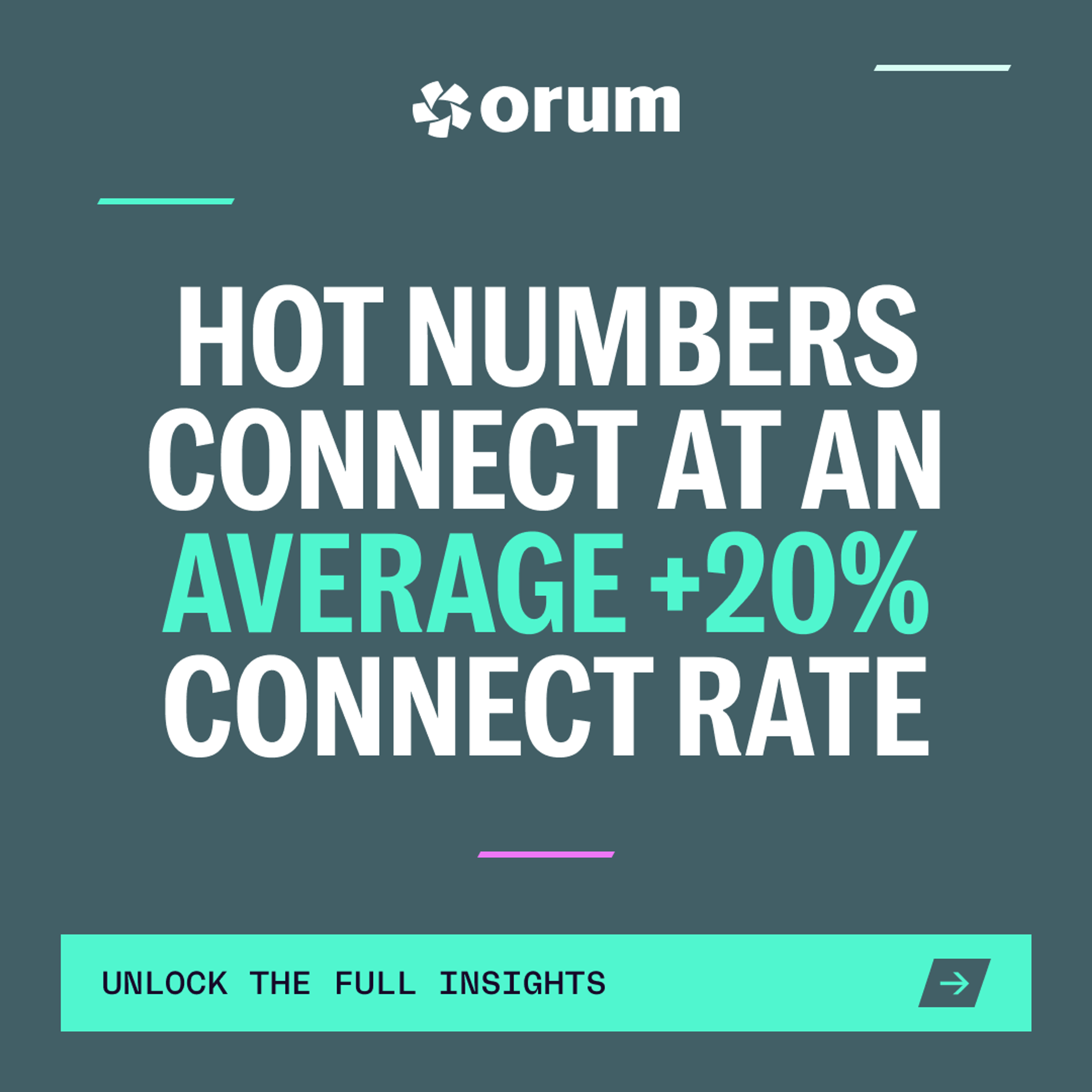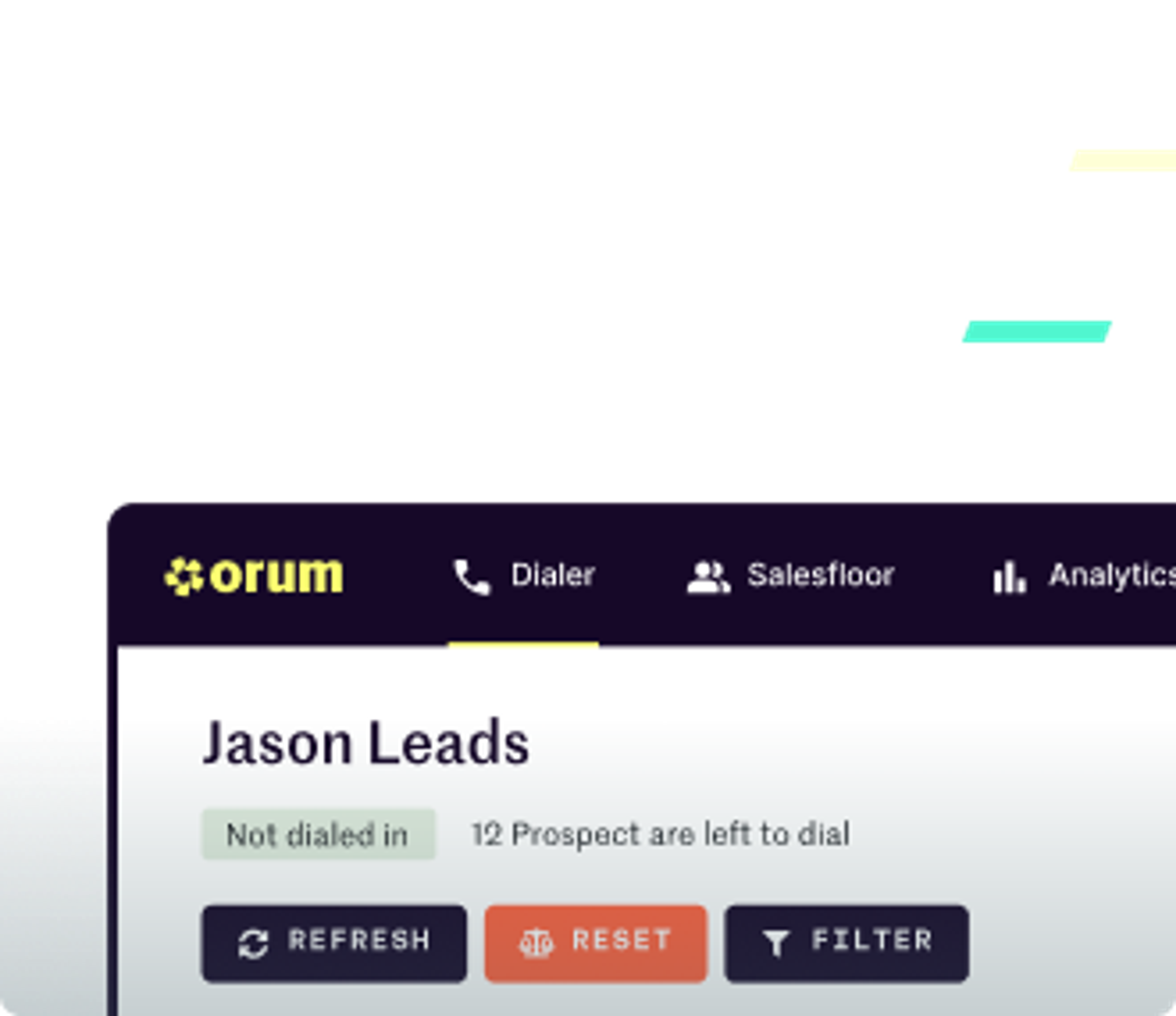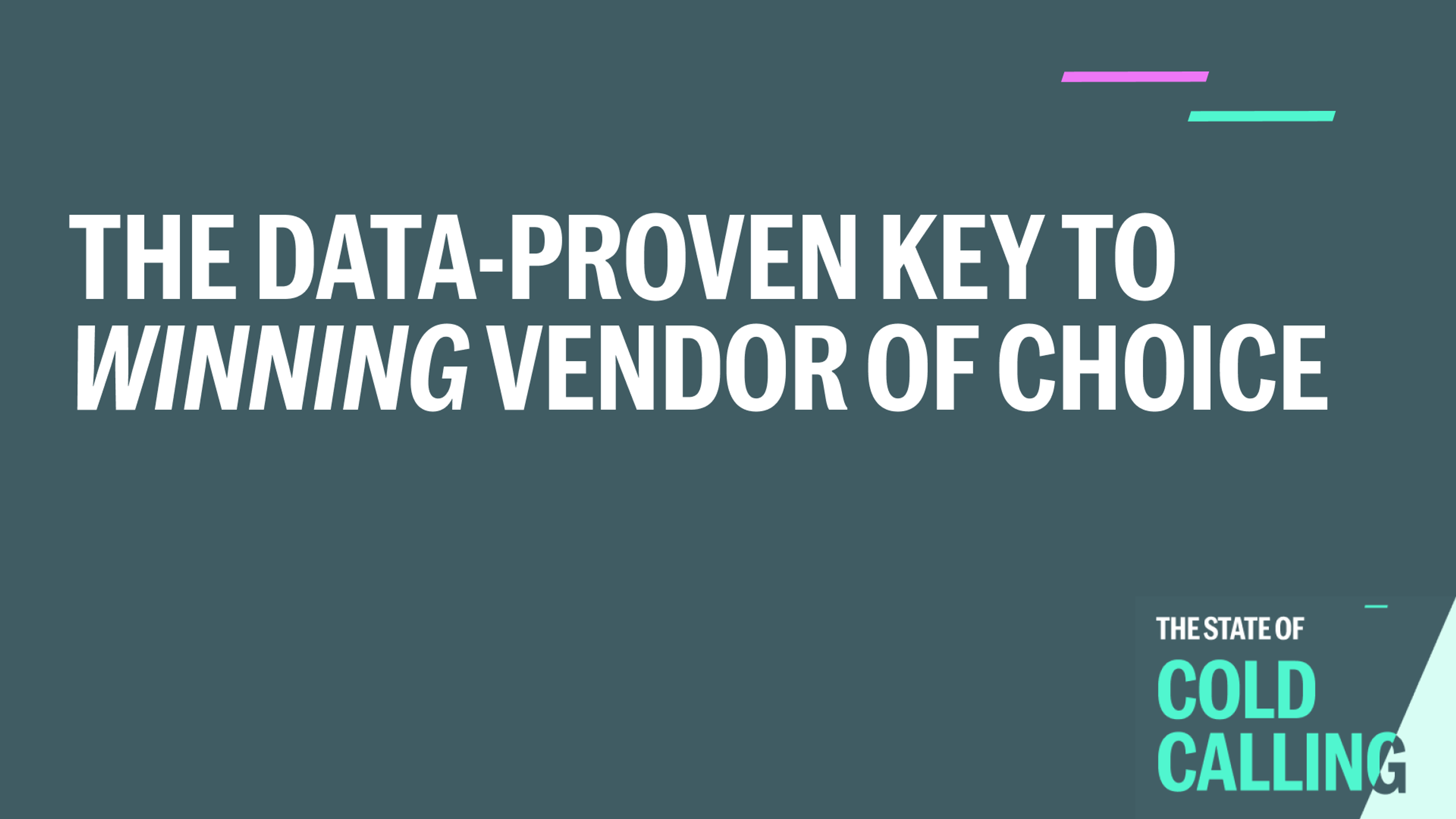Hot Numbers, Hot Pipeline: How to Turn Known Pickups into Booked Meetings


What follows is a breakdown of why Orum’s Hot Numbers is the most powerful cold calling feature available to your sales reps. This data is pulled from the recently released State of Cold Calling report. Download the full report here.
TL;DR:Orum Hot Numbers deliver a 3–5x lift over typical connect rates across personas and seniorities. For example, Admin C-suite Hot Numbers connect at a rate of around 24.2% compared to a baseline of 6.6%. The same pattern holds for Finance VPs, at 24.7%, and Sales VPs, at 24.4%.
Treat Hot Numbers as your precision engine: power dial them and reference the State of Cold Calling time heat map, and you’ll dramatically increase the number of conversations you have during call blocks.
What is a “Hot Number” and Why It Matters
A Hot Number is a contact with a proven connect history according to Orum data. This means that someone who is statistically more likely to pick up your call when looking at previous dials to that prospect. Cold Numbers, on the other hand, have little or no connect history and require more attempts to reach.
In the State of Cold Calling, teams that prioritized Hot Numbers created more at-bats in less time and converted more conversations into meetings. These calls aren’t about luck. They’re about using data to remove randomness and replace it with predictable performance.

Hot Numbers increase pick-up rates by 3–5X
Hot Numbers consistently outperform typical connect rates across seniority levels:
- Admin, C-suite: 24.2% Hot connect rate vs. 6.6% baseline (+3.7x)
- Finance, VP: 24.7% Hot connect rate; strong upside for senior finance stakeholders
- Sales, VP: 24.4% Hot connect rate; ideal for meeting creation and account momentum
The boost holds for Directors, Managers, and ICs across functions like Engineering, Operations, Legal, and Product. It’s not just an IC phenomenon. Senior roles respond too, allowing reps to blend top-down and bottom-up multithreading with fewer wasted dials.
How to Operationalize Hot Numbers
1) Build Your “Hot List” Every Morning
- Pull all Hot Numbers from your sequences and open opportunities.
- Segment by persona and seniority so reps can match their opener to the person on the line.
- Filter by local time windows where pickup rates are historically higher for that persona.
2) Time Your Blocks
Use the time-of-day patterns identified in the State of Cold Calling:
- Sales ICs and Managers: Productive late morning and midday windows
- Admins: Strongest late morning through early afternoon
- Technical roles (IT, Engineering): Early morning or after lunch when fewer deep-work blocks interfere
3) Give Every Hot Call a Clear Purpose
Hot doesn’t mean hard sell. Align your goal to persona:
- Admin: Qualify access and ask for best-path intros
- IC/Manager: Learn current workflow, challenges, and impact metrics
- Director/VP/C-suite: Test strategic alignment and secure the next step
4) Use Voicemail and Multi-Touch to Compound Pickup
Leaving a crisp voicemail after the first attempt increases the next pickup rate by 25.8%. Keep your CTA simple. Direct them to your email to keep the thread alive.
A Hot Number Sequence (2–3 Day Micro-Sprint)
Day 1
- AM: Parallel dial Hot IC/Manager list for discovery and proof points.
- Midday: Power dial 5–8 senior Hot Numbers using insights from earlier calls.
- PM: Send same-day recap emails or leave voicemails referencing those calls.
Day 2
- AM: Parallel follow-ups with interested ICs/Managers.
- Midday: Power dial senior Hot Numbers again, leveraging Admin or IC intel.
- PM: Short social touch referencing the prospect’s challenge.
Day 3
- AM: Power dial high-value senior Hot Numbers you missed.
- Midday: Parallel sweep to fill calendar gaps.
- PM: Email summary of pain points and proposed next steps.
Talk Tracks for Hot Numbers
Admin (Routing and Access)“Calling because I work with executive assistants who protect leadership calendars. Teams like yours are often overwhelmed by vendor noise, and we help leaders avoid last-minute pipeline surprises by solving [specific problem]. Who manages this process day-to-day so I can route my outreach appropriately?”
IC/Manager (Fact Finding) “I work with managers trying to drive more at-bats without burnout. When [problem] occurs, it presents as [symptom]. Is that something you’re dealing with now or planning for this quarter?”
VP/C-suite (Strategic Alignment) “I’m talking with VPs optimizing top-of-funnel efficiency. They usually observe [metric delta], resulting in [impact]. If I share how teams like yours fixed it, would a 20-minute session be worth your time?”
Coaching Checklist for Managers
- Are reps prioritizing Hot Numbers first each day?
- Are they matching mode to persona and seniority?
- Is each call purpose-led with a defined outcome?
- Are voicemails and emails consistent with the conversation thread?
- Are you tracking lift vs. baseline connect rate and meetings per hour?
Metrics to Watch Weekly:
- Connect rate on Hot vs. baseline by persona and seniority
- Meetings per hour and per connection on Hot Numbers
- Percentage of call blocks scheduled in high-probability windows
Hot Numbers compress the randomness of cold calling. They raise the probability of live conversations, the only environment where skill, messaging, and timing can win. When you combine Hot prioritization with time-of-day placement, mode matching, and purpose-driven talk tracks, you engineer more predictable meetings with fewer dials.





